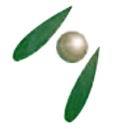
Product Description
Glycerol
CAS number 56-81-5
Glycerol is a chemical compound also commonly called glycerin or glycerine. It is a colorless, odorless, viscous liquid that is widely used in pharmaceutical formulations. For human consumption, glycerol is classified by the FDA among the sugar alcohols as a caloric macronutrient. Glycerol has three hydrophilic hydroxyl groups that are responsible for its solubility in water and its hygroscopic nature. Its surface tension is 64.00 mN/m at 20 °C , and it has a temperature coefficient of -0.0598 mN/(m K). The glycerol substructure is a central component of many lipids. Glycerol is sweet-tasting and of low toxicity.
In foods and beverages, glycerol serves as a humectant, solvent and sweetener, and may help preserve foods. It is also used as filler in commercially prepared low-fat foods (e.g., cookies), and as a thickening agent in liqueurs. Glycerol and water are used to preserve certain types of leaves. As a sugar substitute, it has approximately 27 calories per teaspoon and is 60 percent as sweet as sucrose. Although it has about the same food energy as table sugar, it does not raise blood sugar levels, nor does it feed the bacteria that form plaques and cause dental cavities. As a food additive, glycerol is labeled as E number E422.
In organic synthesis, glycerol is used as a readily available prochiral building block. Even if glycerol with no substitutions is symmetrical, and carbon atoms 1 and 3 are exchangeable, once one of them forms an ester or ether bond, the two are no longer exchangeable. Further bond formation and lysis may lead to products substituted solely at the third carbon; due to such circumstances, to maintain both full description and conformance to the chemistry naming rules (which require carbon counting to minimize ordinal numbers of substituents), the carbons are named sn-1, sn-2, and sn-3, with "sn" standing for "sterospecifical numbering"
Other Products in 'Starch Derivatives ' category
 |
A & Z Group Co.,Ltd
All Rights Reserved.(Terms of Use) Developed and Managed by Infocom Network Private Limited. |
 English
English Spanish
Spanish French
French German
German Italian
Italian Chinese (Simplified)
Chinese (Simplified) Japanese
Japanese Korean
Korean Arabic
Arabic Portuguese
Portuguese





 Send Inquiry
Send Inquiry